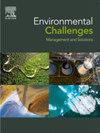Developing habitat suitability models for the endangered plant species Kelussia odoratissima Mozaffarian using management data: Application of Bayesian belief network
Q2 Environmental Science
引用次数: 0
Abstract
Conservation of endangered species is very important for maintaining native biodiversity. Management priorities, like climate change, is effective in the distribution of endangered species. To develop effective management and conservation strategies for the future, it is necessary to understand the current species potential distributions. However, for most species, few data are available on their current distributions, let alone on projected future distributions. Kelussia odoratissima Mozaffarian is an endemic perennial and medicinal forb species. The evaluation of K. odoratissima's conservation status places it within the Endangered (EN) category according to the IUCN classification. We demonstrated the benefits of Bayesian Belief Networks (BBNs) for predicting the distribution of endangered and medicinal K. odoratissima species using expert opinion. An influence diagram was developed to recognize the important factors influencing habitat suitability K. odoratissima, and it was populated with probabilities to produce a BBNs model. The behavior of the model was examined using sensitivity analysis. Environmental suitability, management condition, climate suitability, utilization time and levels were identified as the main variables influencing habitat suitability of K. odoratissima. The generated BBNs model had good accuracy because the ROC area under the curve was 0.918. We aim to demonstrate the ability of this approach to integrate field studies with expert knowledge, especially when empirical data are lacking. The BBNs model excels at illustrating species-habitat relationships and rapidly estimating habitat suitability, serving as a valuable tool for conservationists and decision-makers.
利用管理数据建立濒危植物臭臭草生境适宜性模型:贝叶斯信念网络的应用
保护濒危物种对维持本地生物多样性具有重要意义。管理优先事项,如气候变化,对濒危物种的分布是有效的。为了制定有效的未来管理和保护策略,有必要了解当前物种的潜在分布。然而,对于大多数物种来说,关于它们目前分布的数据很少,更不用说预测它们未来的分布了。臭草是一种特有种多年生草本植物。根据国际自然保护联盟(IUCN)的分类,对其保护状况的评估将其列为濒危物种(EN)。我们证明了贝叶斯信念网络(BBNs)在利用专家意见预测濒危和药用臭臭k物种分布方面的优势。通过绘制影响图来识别影响臭臭桫椤生境适宜性的重要因素,并对其进行概率填充,建立了一个bbn模型。采用灵敏度分析对模型的行为进行了检验。环境适宜性、管理条件、气候适宜性、利用时间和利用水平是影响臭臭木生境适宜性的主要因素。生成的BBNs模型具有较好的准确度,曲线下的ROC面积为0.918。我们的目标是证明这种方法将实地研究与专家知识相结合的能力,特别是在缺乏经验数据的情况下。bbn模型擅长于说明物种-栖息地关系和快速估计栖息地适宜性,是保护主义者和决策者的宝贵工具。
本文章由计算机程序翻译,如有差异,请以英文原文为准。
求助全文
约1分钟内获得全文
求助全文
来源期刊

Environmental Challenges
Environmental Science-Environmental Engineering
CiteScore
8.00
自引率
0.00%
发文量
249
审稿时长
8 weeks
 求助内容:
求助内容: 应助结果提醒方式:
应助结果提醒方式:


